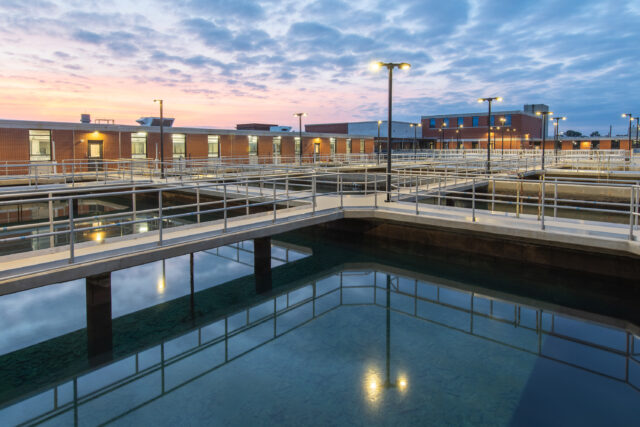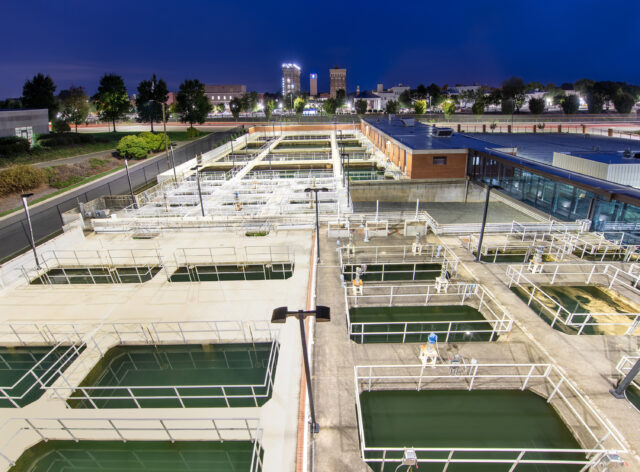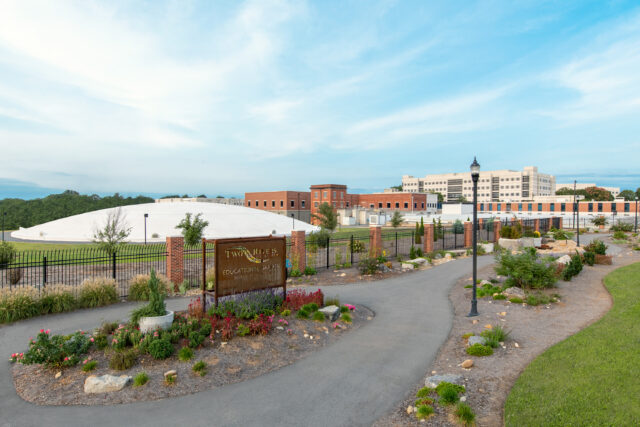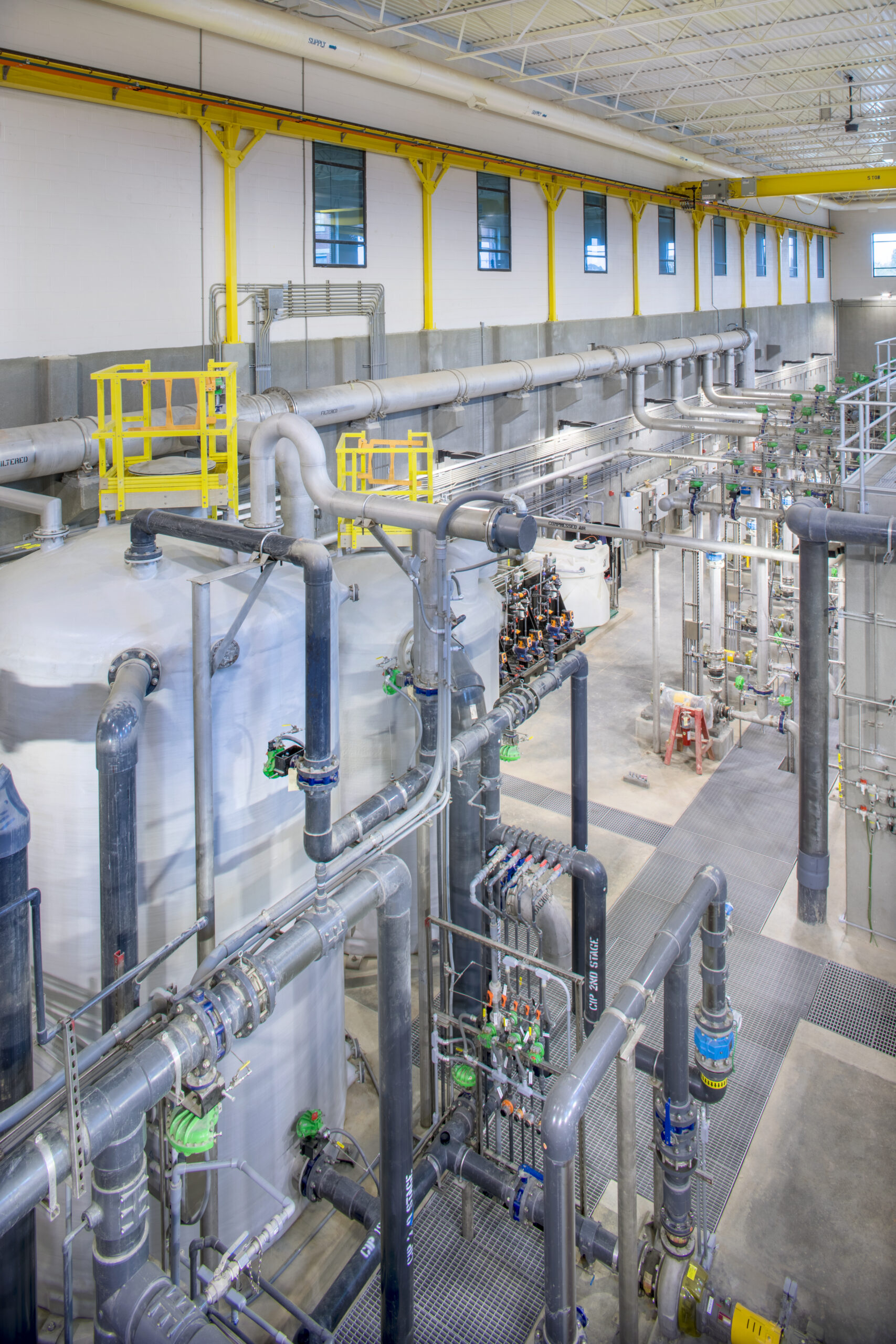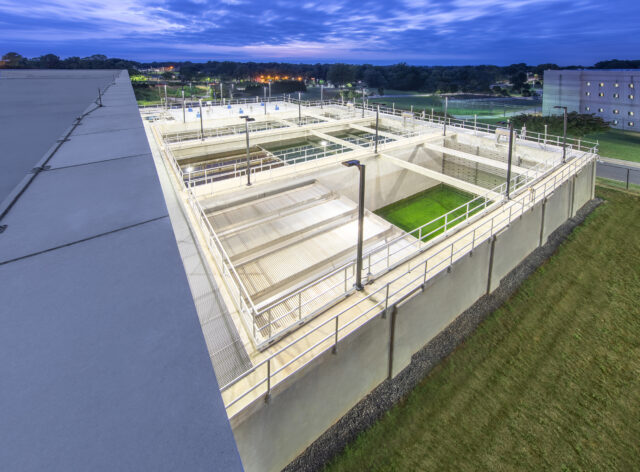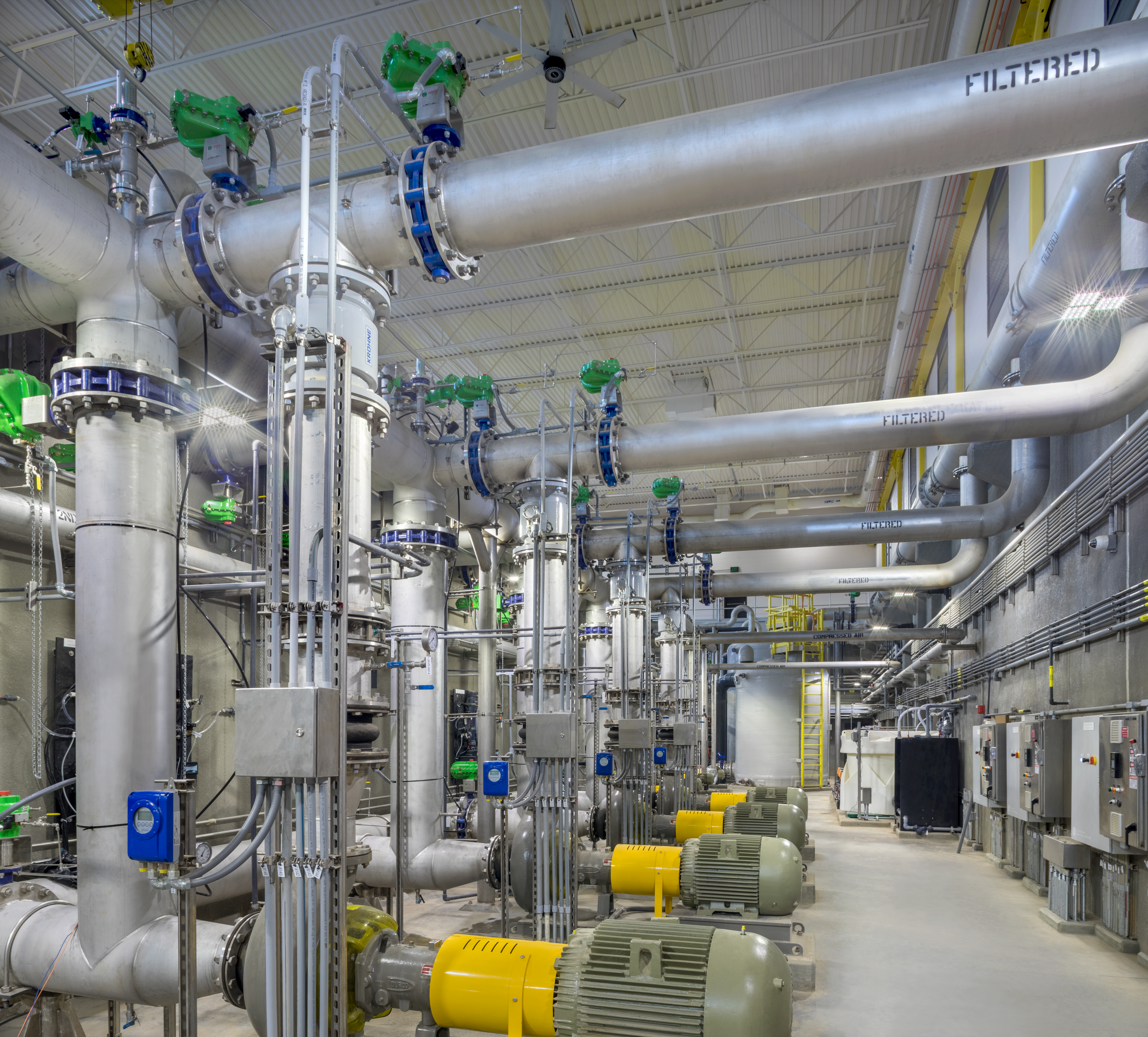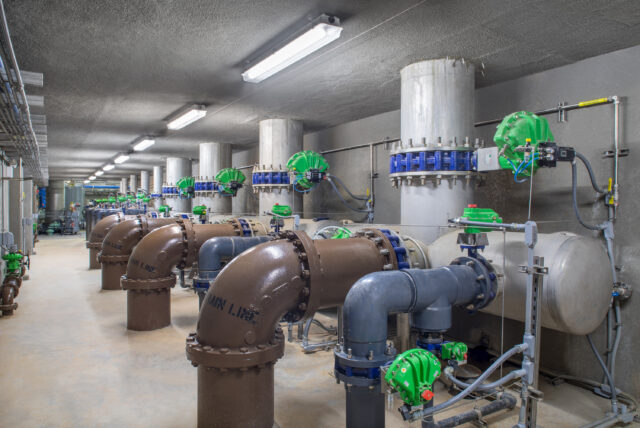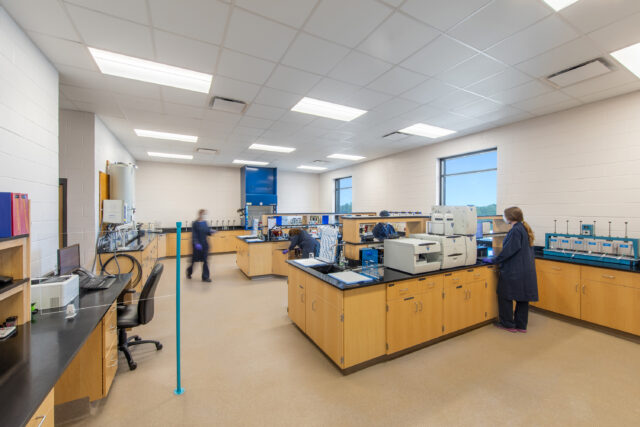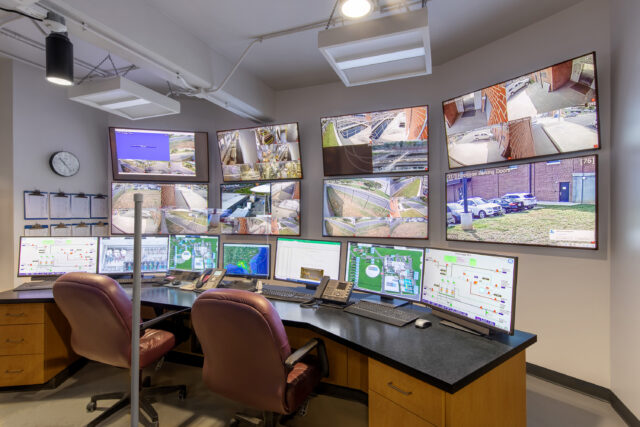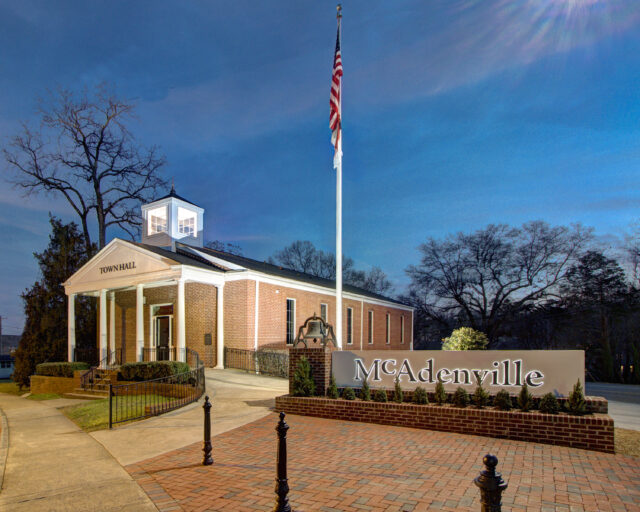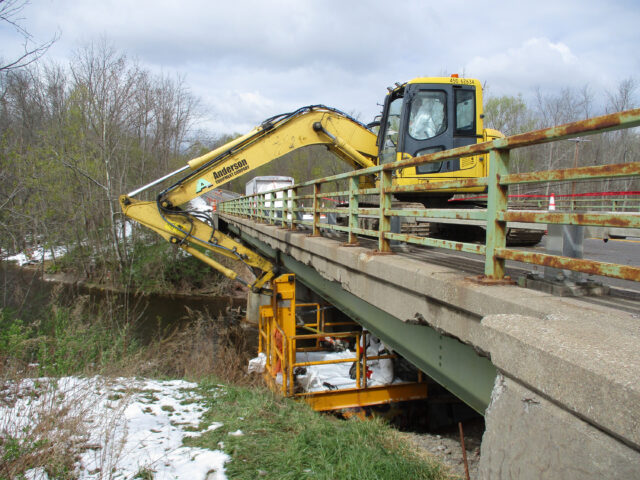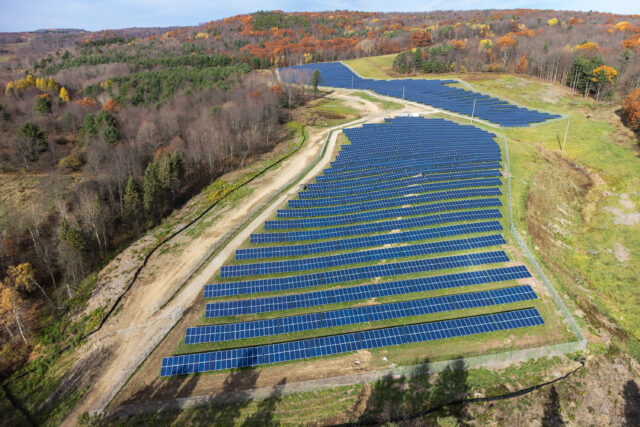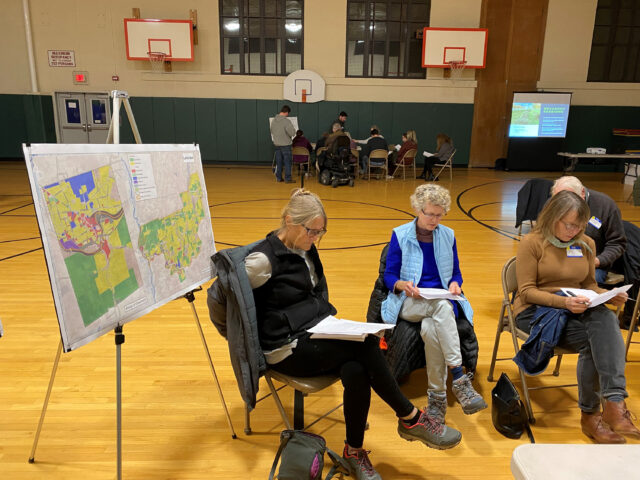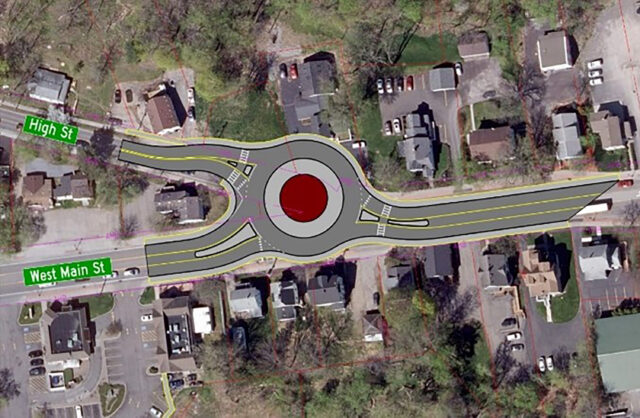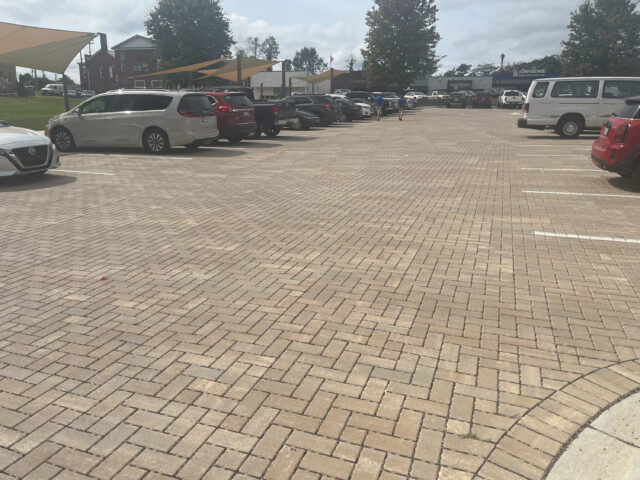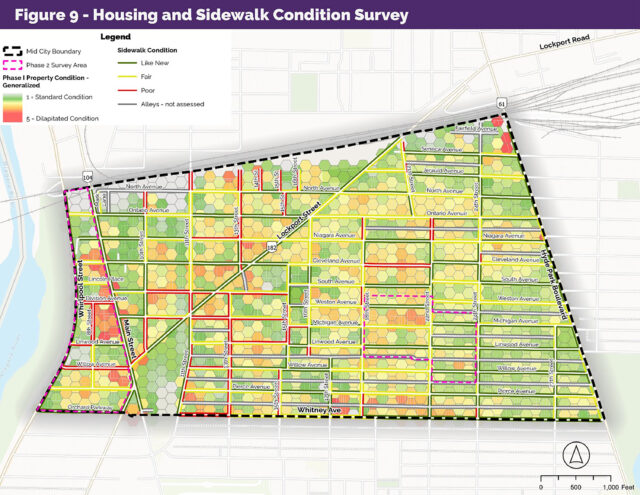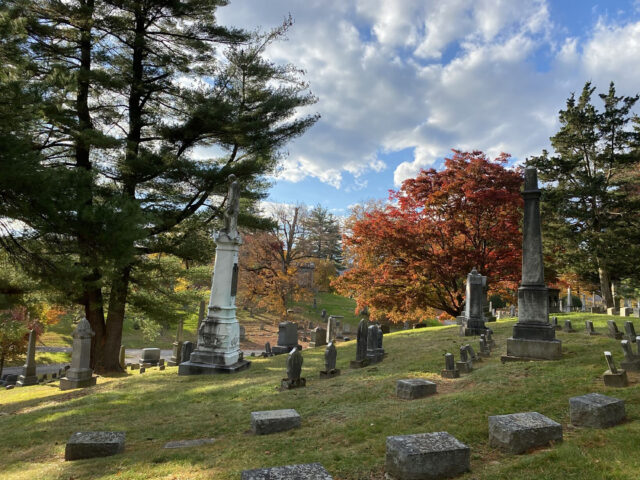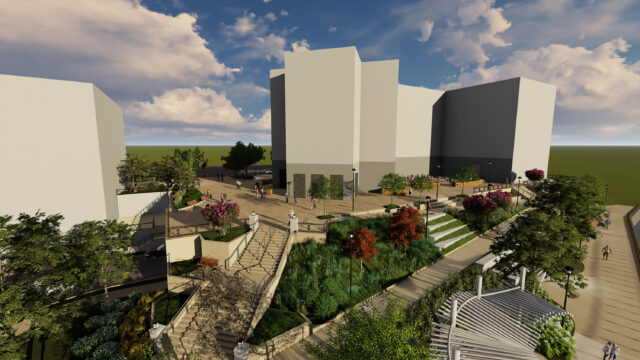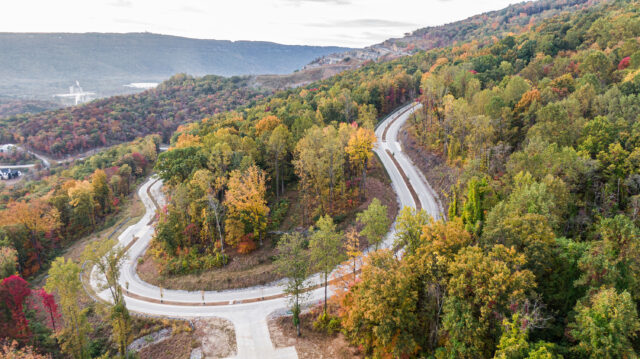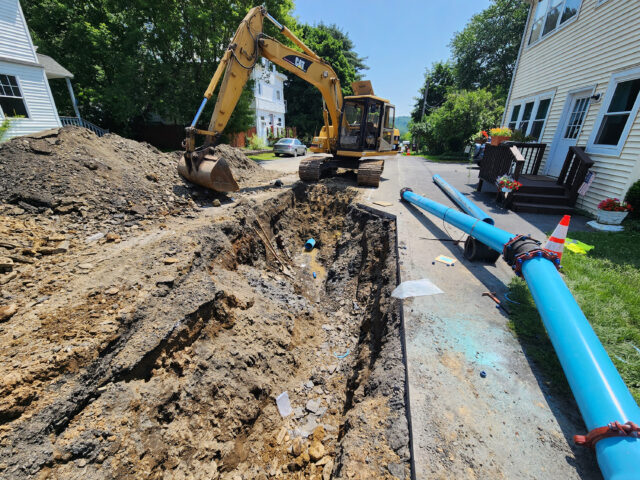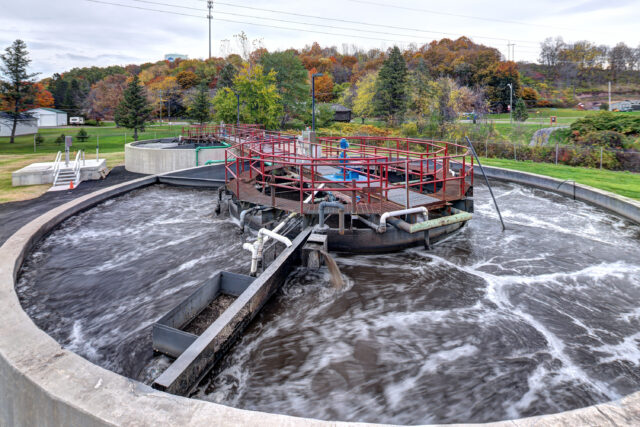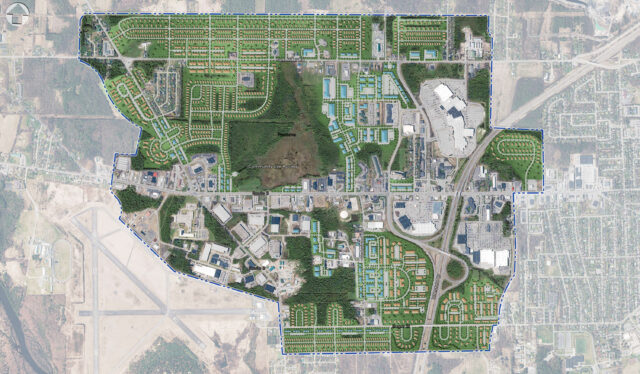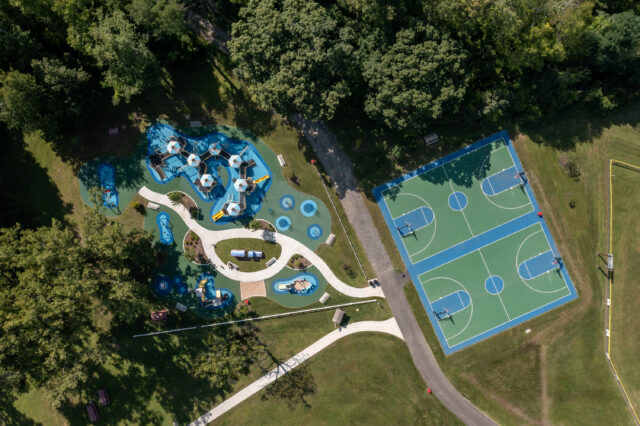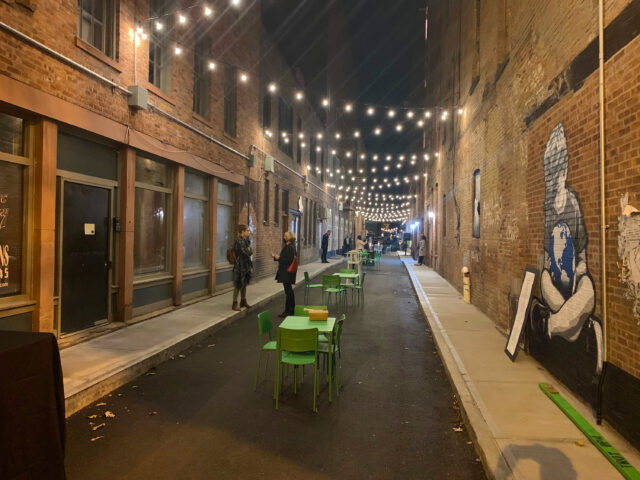Special Considerations for This Project
Social/Economic & Sustainable Design
In order to implement a membrane treatment process in the City of Gastonia, LaBella had to consider two things in our design: efficiency and sustainability. After the initial pilot study was completed, it was evident that the membrane filters were most efficient when treating raw water. The more coagulants introduced upstream of the filters resulted in a tendency to clog or bind the filters, causing more frequent backwashes and cleans. Working with state regulators, the project team arrived at a compromise between traditional 4 hour sedimentation basin detention time and direct raw water feed and designed a 2 hour sedimentation basin. This modification allowed us to reduce concrete and steel costs to offset the cost of the new membrane technology, in addition to increasing efficiency of the membrane treatment process.
Sustainability was another key factor in successfully implementing the membrane technology. In a conventional treatment facility, you lose 6-10% of the treated water within your plant during cleanings and washdowns of filters and sediment basins. Typically, this water is not re-used and is transported through the sewer system to a nearby wastewater treatment plant. LaBella designed a second-stage membrane filter process that treated this used water. By utilizing a more robust membrane fiber, usually seen in wastewater facilities, the City was able to recover and treat 99% of the water entering the facility. Ultimately, this second-stage process saves citizens money, utilizes more of the water in the distribution process, and reduces energy costs at the plant itself.
Complexity
In order to make this plan work, LaBella and the City met periodically with stakeholders from the North Carolina Department of Environmental Quality (DEQ) to educate state regulators and provide a level of confidence in the team to successfully implement and move forward with the plan. This included site visits, presentations, and meetings with various membrane technology manufacturers to familiarize the state with the process and its benefits. After nearly a year, the DEQ allowed the City to proceed and the State awarded this project the maximum single project loan of $35 million dollars from the State Revolving Fund (SRF) which is funded by the Environmental Protection Agency (EPA).
In addition to this trailblazing effort, this project took forethought and courage from the City of Gastonia to implement for additional reasons: Firstly, this was the single largest project the City had undertaken in its history. Secondly, the plant needed to remain operational while upgrades were made – this is equivalent to working on a car engine while it is running. This meant it was imperative that the plant still continue to filter and treat water for local residents throughout the duration of design and construction.
LaBella has been a very positive force throughout the six-year long, $65M upgrade of the City of Gastonia/Two Rivers Water Treatment Plant. This project is, by far, the largest project ever undertaken by the City of Gastonia and has been a daunting task for all of us. LaBella’s steady guidance and creative abilities have made the project so much better, each step of the way.Ed Cross
Division Manager of Water Supply and Treatment
Image Gallery
Gastonia Water Treatment Case Study
The City of Gastonia/Two Rivers Utilities Water Treatment Plant Upgrade Phase I was a recent finalist for the Research Triangle Cleantech Cluster Water Innovation Awards. This award recognizes a water or wastewater project that uses innovative cleantech solutions to create positive impacts for environment, economy, and residents.
LaBella was honored to partner with The City of Gastonia on this important project which brought surface water membrane technology to citizens at a cost equal to conventional treatment. Learn more about this technology in this case study video.at uses innovative cleantech solutions to create positive impacts for environment, economy, and residents.
